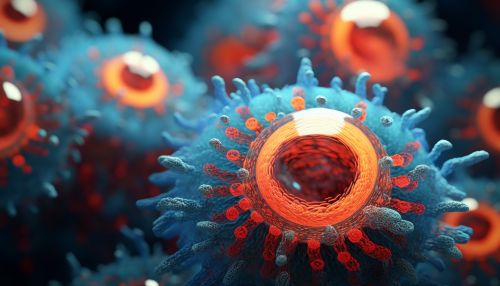Cellular reprogramming
Introduction
Cellular reprogramming refers to the process of reverting mature, specialized cells into a pluripotent state, capable of differentiating into any cell type in the body. This process is a significant breakthrough in the field of regenerative medicine and stem cell research, providing potential solutions for a range of diseases and injuries.


History and Development
The concept of cellular reprogramming was first introduced in the 1950s, with the discovery of nuclear transfer in frogs. However, it wasn't until the late 20th century that the first successful mammalian cloning, Dolly the sheep, demonstrated the practical application of this concept. The process has since been refined and developed, leading to the discovery of induced pluripotent stem cells (iPSCs) by Shinya Yamanaka and his team in 2006.
Mechanisms of Cellular Reprogramming
Cellular reprogramming can be achieved through various methods, including somatic cell nuclear transfer (SCNT), cell fusion, and the use of transcription factors. Each of these methods involves a different process and has its advantages and disadvantages.
Somatic Cell Nuclear Transfer
In SCNT, the nucleus of a somatic cell is transferred into an enucleated egg cell. The egg cell's cytoplasm contains factors that reprogram the somatic cell nucleus, leading to the formation of a pluripotent cell.
Cell Fusion
Cell fusion involves the merging of two cells, typically a pluripotent stem cell and a somatic cell. The pluripotent cell's factors reprogram the somatic cell's genome, resulting in a pluripotent hybrid cell.
Use of Transcription Factors
This method involves the introduction of specific transcription factors into a somatic cell. These factors, identified by Yamanaka and his team, are capable of reverting the cell back to a pluripotent state. The factors, known as Yamanaka factors, include Oct4, Sox2, Klf4, and c-Myc.
Applications of Cellular Reprogramming
Cellular reprogramming has numerous potential applications in the fields of regenerative medicine, drug discovery, and disease modeling.
Regenerative Medicine
Reprogrammed cells can be used to generate patient-specific pluripotent stem cells. These cells can then be differentiated into the desired cell type and used to replace damaged or diseased tissues, potentially treating a range of conditions from spinal cord injuries to heart disease.
Drug Discovery
Reprogrammed cells can also be used in drug discovery and testing. By generating disease-specific cell lines, researchers can test the effects of potential drugs on these cells, providing valuable insights into their efficacy and potential side effects.
Disease Modeling
Disease-specific cell lines generated through cellular reprogramming can also be used to model diseases in vitro. This allows researchers to study the progression of diseases at a cellular level and to investigate potential treatments.
Challenges and Ethical Considerations
Despite its potential, cellular reprogramming also presents several challenges and ethical considerations. These include the risk of tumorigenesis, the ethical issues surrounding the use of embryonic cells in SCNT, and the technical challenges of achieving efficient and stable reprogramming.
